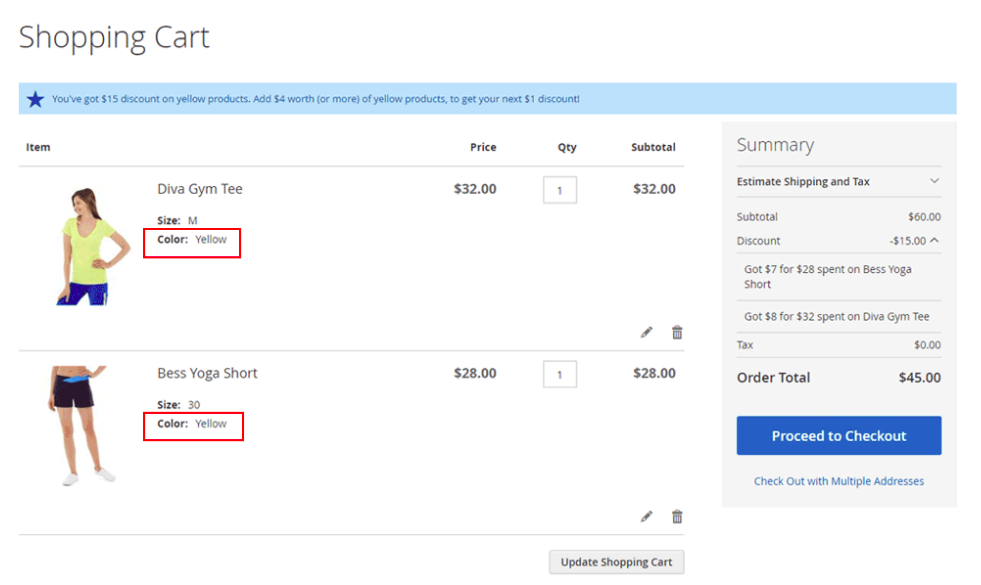Get Y$ For Each X$ Spent
This promo type will make it possible to get $Y discount for each $X spent.
Promo example:
"Get $10 on each $100 spent". That is, if the customer has $100 worth of products in the shopping cart - $10 discount will get applied. Once the customer reaches $200 - another $10 discount will get applied and so on.
The "Get Y$ For Each X$ Spent" promotion is similar a percentage discount, however, it encourages the customer to reach increments.
Configuration
In the actions list, we have the "Get Y$ For Each X$ Spent" action type -
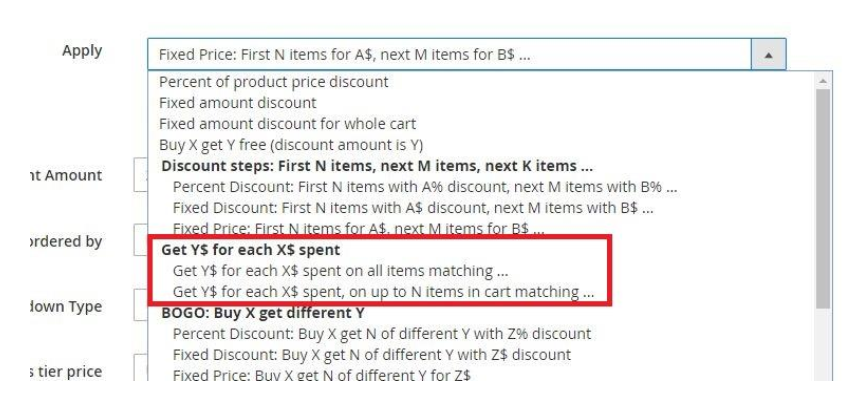
Once selected, the following fields will show up -
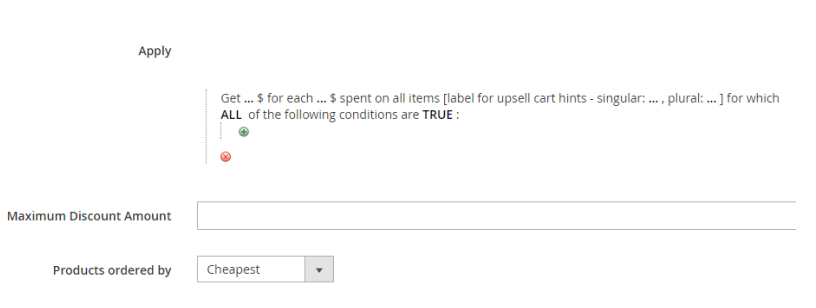
Fields explanation
- Get … $ for each … $ spent – number of store currency units (in our example it’s dollars) that the customer will get per number of store currency units that he will spend.
- Label for cart hints – singular / plural – the name that will show up in the cart hints, representing the items for which the promotion will apply.
- Up to … – maximum number of items that the rule can be applied to.
- Cheapest (most expensive) items – the order of items by which the promotion will be applied.
- Items for which ALL of the following conditions are TRUE – the condition on items in cart, for which the rule will apply.
- Maximum Discount Amount – maximum discount amount that customer can get in his cart using this promotion
Get Y$ For Each X$ Spent - No limitation
Example
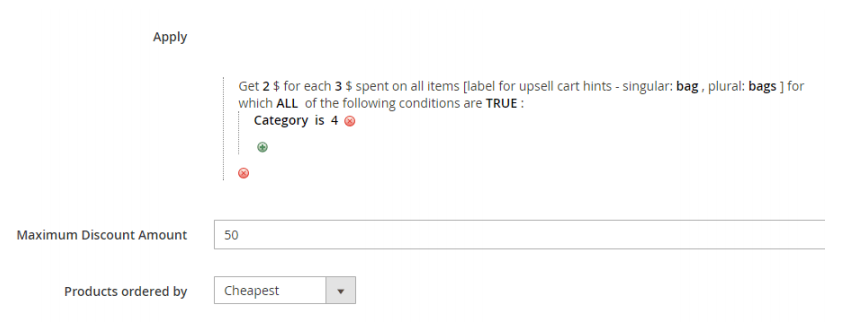
The rule in this example is – “Get 2$ for each 3$ spent on bags”. Maximum discount amount is 50$.
Note: In our example, bag is any product that belongs to category 4.
Cart examples for this rule:
- Customer has 2 bags (10$ each) and 3 bags (23$) each in cart. The discount is 50$. (The total value of the bags in cart is 89$, if we get 2$ on each 3$ spent, we get 58$, but since the “Maximum Discount Amount” is 50$, the discount amount is 50$ and not 58$)
- Customer has 1 bag (12$) in cart. The discount amount is 8$.
Upsell cart hints example for this rule:
- Customer has 1 bag (36$) in his cart. The upsell cart hint is “You've got $24 discount on bags. Add $3 worth (or more) of bags, to get your next $2 discount!”
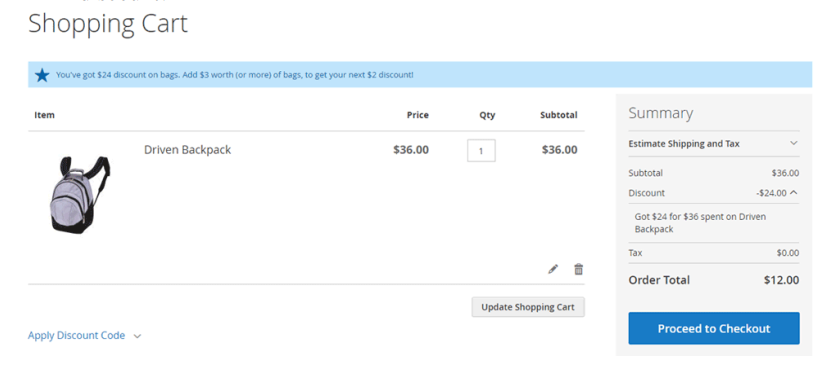
Get Y$ For Each X$ Spent - up to N items
Example

The rule in this example is – “Get 1$ for each 4$ spent on first 5 cheapest yellow items in cart”
Cart examples for this rule:
- Customer has 3 yellow items (7$ each) in cart. The discount is 5$.
- Customer has 2 yellow items (5$ each) and 4 yellow items (11$ each). The discount is 10$. (The rule is applied on the first 5 cheapest yellow items)
Upsell cart hints example for this rule:
Customer has 1 yellow t-shirt (32$) and 1 yellow short (28$) in cart. The upsell cart hint is “You've got $15 discount on yellow products. Add $4 worth (or more) of yellow products, to get your next $1 discount!”
